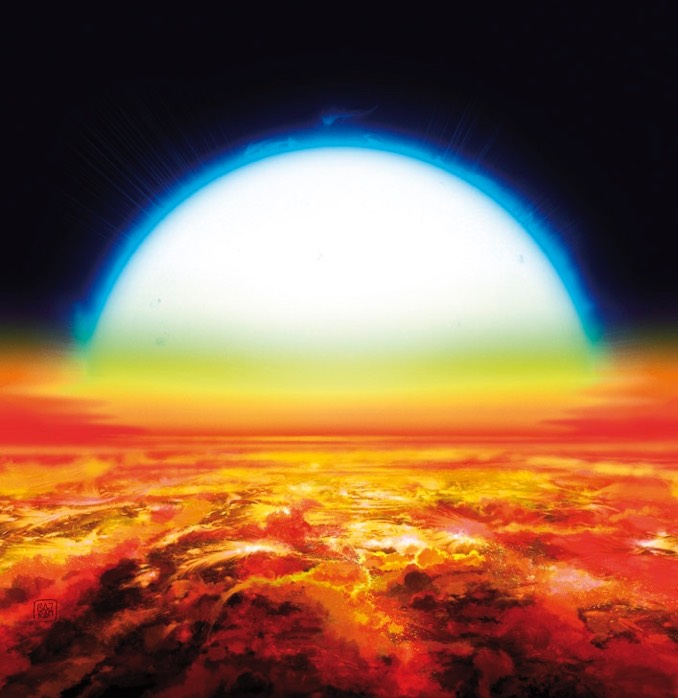
A blue star known as KELT-9 in the constellation Cygnus some 650 light years from Earth shines with a temperature higher than 10,000 degrees Celsius (18,000 Fahrenheit), almost twice as hot as the Sun. A giant Jupiter-class planet – KELT-9b – races around the star every 36 hours at a distance that is 30 times closer than Earth’s orbit around the sun. As a result, the planet, discovered last year, is heated to more than 4,000 C (7,200 F) and its star appears about 70 times larger than the Sun in Earth’s sky.
Researchers at the University of Bern, studying how such extreme heating might affect such a planet’s atmosphere, ran computer simulations that showed the bonds holding molecules together would be broken and most material in such an atmosphere would be in atomic form. The study predicted gaseous atomic iron should be visible using current telescopes.
Astronomers at the University of Geneva joined forces with the University of Bern team and used the HARPS-North spectrograph on the Telescopio Nazionale Galileo in La Palma to collect spectra of KELT-9b’s atmosphere as the planet passed in front of its star and found a strong signal indicating the presence of iron vapour.
“With the theoretical predictions in hand, it was like following a treasure map,” said Jens Hoeijmakers, a researcher at the Universities of Geneva and Bern and lead author of the study. “When we dug deeper into the data, we found even more.”
Including titanium vapour.
Astronomers believe planets orbiting so close to their stars lead short lives, essentially evaporating in the relentless heat. KELT-9b likely is massive enough to avoid that fate, but the new study clearly shows the impact of the extreme radiation.
In cooler Jupiter-class planets, heavy elements like iron and titanium are difficult to detect, hidden in gaseous oxides or in dust particles. But not at KELT-9b, where atomic bonds are broken ripped apart in the heat.
“This planet is a unique laboratory to analyse how atmospheres can evolve under intense stellar radiation,” observed David Ehrenreich, principal investigator of the University of Geneva’s FOUR ACES team, or Future of Upper Atmospheric Characterisation of Exoplanets with Spectroscopy.



